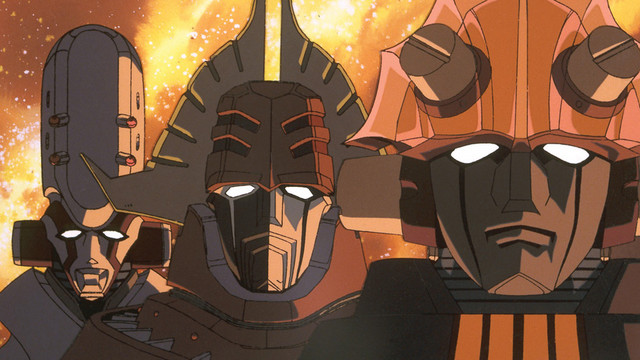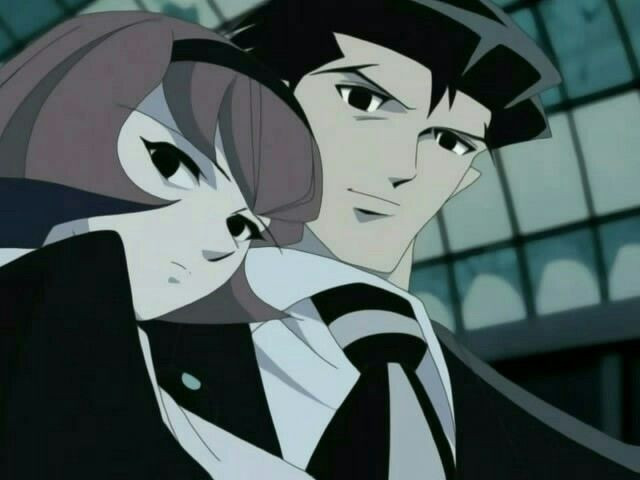Many anime fans remember their very first taste of anime, whether it was Robotech after school, Fullmetal Alchemist on Adult Swim, or streaming My Hero Academia here on Crunchyroll.For fans of my generation, Toonami was crucial, bringing together classics like Sailor Moon, Yu Yu Hakusho, Trigun, and my personal favorite, The Big O, in a single afternoon block. Today marks the 20th anniversary of The Big O in Japan, and it's the perfect show to be nostalgic for, since it's all about a city haunted by a forgotten past and the hunt for lost memories.There was nothing quite like it at the time in 1999, and there's still nothing quite like it today. Younger fans may have missed the hype on this uniquely stylish mecha noir entirely, so it's the perfect time for a drive down Paradigm City's memory lane.Big O … it's showtime!

The Big O is the story of Roger Smith, the Negotiator of Paradigm City, a seemingly post-apocalyptic domed city barely holding it together after a mysterious event 40 years prior in which everyone lost their memories.What a "Negotiator" is is never precisely defined, but Smith acts as a private eye, superhero, and giant robot pilot for events that the city's military police are too ill-equipped to handle.People have gone on living without memories by reconstructing identities from whatever old photographs, books, and films might still be around, but there's still a gnawing hunger in many to know what cannot be known.Mysterious android girl R Dorothy Wayneright acts as Roger Smith's companion as he faces down the secrets of the past that can't stay buried. , an amnesiac femme fatale whose lust for memories of the lost past surpasses all others, and mad journalist Michael Seebach, anarchic Joker to Smith's Batman, who thinks Paradigm City is built entirely on lies an Above it all is Alex Rosewater, head of the Paradigm Corporation and de facto dictator of Paradigm City who seems to know more than he lets on.And of course, when giant war machines of the past show up on the city streets, Roger Smith calls "Showtime" and engages in brutal robot combat that threatens to tear the entire city apart every time.
"Part James Bond, part Bruce Wayne, part giant robot," the old Toonami ads promised, but this was a pre-sakuga age when the only widely known director was Hayao Miyazaki.Were I to try and pitch The Big O to the generation that missed it on Toonami and have heard little of it sense, I would draw their attention to the incredible team assembled for the series. The Big O was animated by Cowboy bebop's Sunrise, previously subcontracted to work on Batman: The Animated Series, which accounts for the show's influence on The Big O's singular look.The director was Kazuyoshi Katayama, storyboarder and animation director for Giant Robo, another classic robot epic about gigantic steampunk leviathans.The script was by Chiaka J. Konaka, the prolific writer in charge of many other canonized 90s classics like Serial Experiments Lain and Magic Users' ClubAnd the Western cultural touchstone I would most compare The Big O to is Twin peaks, not only for its noirish sensibilities and surrealistic tendencies, but also for its premature cancellation and miraculous continuation years down the line.

Like its Toonami brethren Cowboy bebop and Trigun, The Big O is a pastiche of various Western elements done in a way that we haven't really seen before or since. Batman vibe is obvious (Roger Smith even has a butler), but The Big O also pulls from other noir private eye stories of Philip Marlowe and Sam Spade.The retro-robots pull from the pioneering sci-fi works of Isaac Asimov, including the "R" title designation for android citizens.The robot combat obviously pulls from Giant Robo and the tokusatsu shows that inspired it like Johnny Socko and Super Robot Red BaronAnd in case the show seems almost too claustrophobically moody from these influences, I should note the show channels the very best elements of Scooby Doo when Roger Smith investigates seemingly supernatural phenomena, always maintaining a certain level of whimsy and theatricality in the show's world.One of my favorite episodes, directed by Mononoke and Gatchaman Crowds' Kenji Nakamura, even has villain Beck constructing a screaming replica of Roger Smith's head in order to lure Big O off of a cliff into an ocean.
The Big O was originally scheduled for 26 episodes in its Japanese broadcast run but was canceled after only 13 due to low viewership.The show somehow still found its way to Toonami, and the popularity of the show despite its cliffhanger ending (the series literally ended on To Be Continued) let to Cartoon Network funding a second season in 2003.This would not be the first international co-production nor the last, but what was striking was The Big O team going for a challenging, confusing, and surreal storyline that it seemed impossible for Western executives to have greenlit, yet they had.After years of Sailor Moon's lesbian guardians being rewritten into kissing cousins and digipaint bikinis being added to Tenchi Muyo, here was shocking proof that Western companies could involve themselves in anime production without the end product being altered.

I still hear some old fans talk about wanting a Big o season 3, and apparently Cartoon Network had an option for more that was never followed up on due to the middling ratings for the second season.But as it is, The Big O has been in my top 10 anime since the 1990s and it will probably always remain there.Offering definitive answers to the show's mysteries would be a betrayal of the show's themes about identity and uncertainty.We have the symbols and images we were provided, and we have to construct meaning from what we have.The denizens of Paradigm City always looked down on the robotic citizens as less than fully human despite the fact they clearly envied the simple programming that gives a robot immediate meaning in its existence. The Big O acknowledges the real struggle of trying to step out of our environment and be our best possible selves, and should be remembered as a highlight of the post-Evangelion period of experimental anime series.
Did you watch The Big O? What are your favorite parts of the show? Let us know in the comments!
![]()
—-
Thomas Zoth is a features writer for Crunchyroll, blogs occasionally at Hungry Bug Diner, and appears on podcasts at Infinite Rainy DayYou can follow him on Twitter at @ABCBTom.
Do you love writing? Do you love anime? If you have an idea for a features story, pitch it To Crunchyroll Features!
Leave a comment
You must be logged in to post a comment.